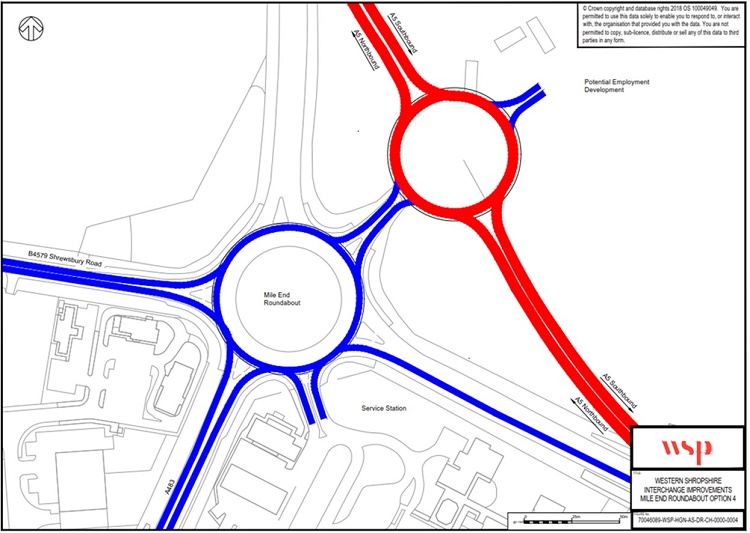Consultation on proposed improvements to Oswestry’s Mile End roundabout

Mile End roundabout
A public consultation about proposed improvements to Mile End roundabout in Oswestry is to begin next week, and aims to gather people’s views before a planning application for the work is submitted.
A consultation event is being held at Mile End Golf Club on Tuesday 24 and Wednesday 25 September [2019] from 11am to 8pm each day
As part of the consultation, the proposals – and a questionnaire – will also be available to view on the council’s website from 24 September and at Oswestry Library from 2 October to 1 November. An additional meeting is also being arranged with parish and town councils, to give them the opportunity to comment and ask questions.
Under the plans, a new second roundabout would be constructed on land owned by Shropshire Council – the Oswestry Innovation Park site – and then be connected to the existing strategic road network on the A5 and A483, therefore minimising the disruption to the network during the construction phase.
Subject to planning permission, work to construct the new ‘dumbbell’ roundabout could begin in July 2020 and be completed by March 2022.

The proposed new ‘dumbbell’ design for Mile End
Steve Charmley, Shropshire Council’s Cabinet member for economic growth, said:
“The development of housing and employment land within Oswestry has been heavily constrained by the existing capacity of the road network.
“These planned improvements will improve the capacity of the road network on the A5 at Mile End, and improve the viability of planned housing developments.
“Improvements have been made to the Mile End junction in recent years but these have only addressed existing traffic issues. The subsequent, significant increase in traffic means these further improvements are vital so that much-needed additional housing and employment can be delivered in the area.”
The planning application is due to be submitted in December 2019, before a final design is published in June 2020.
The preferred design option for Mile End has been agreed in principle through ongoing discussions with Highways England and is based on detailed traffic modelling work to assess future traffic requirements.

